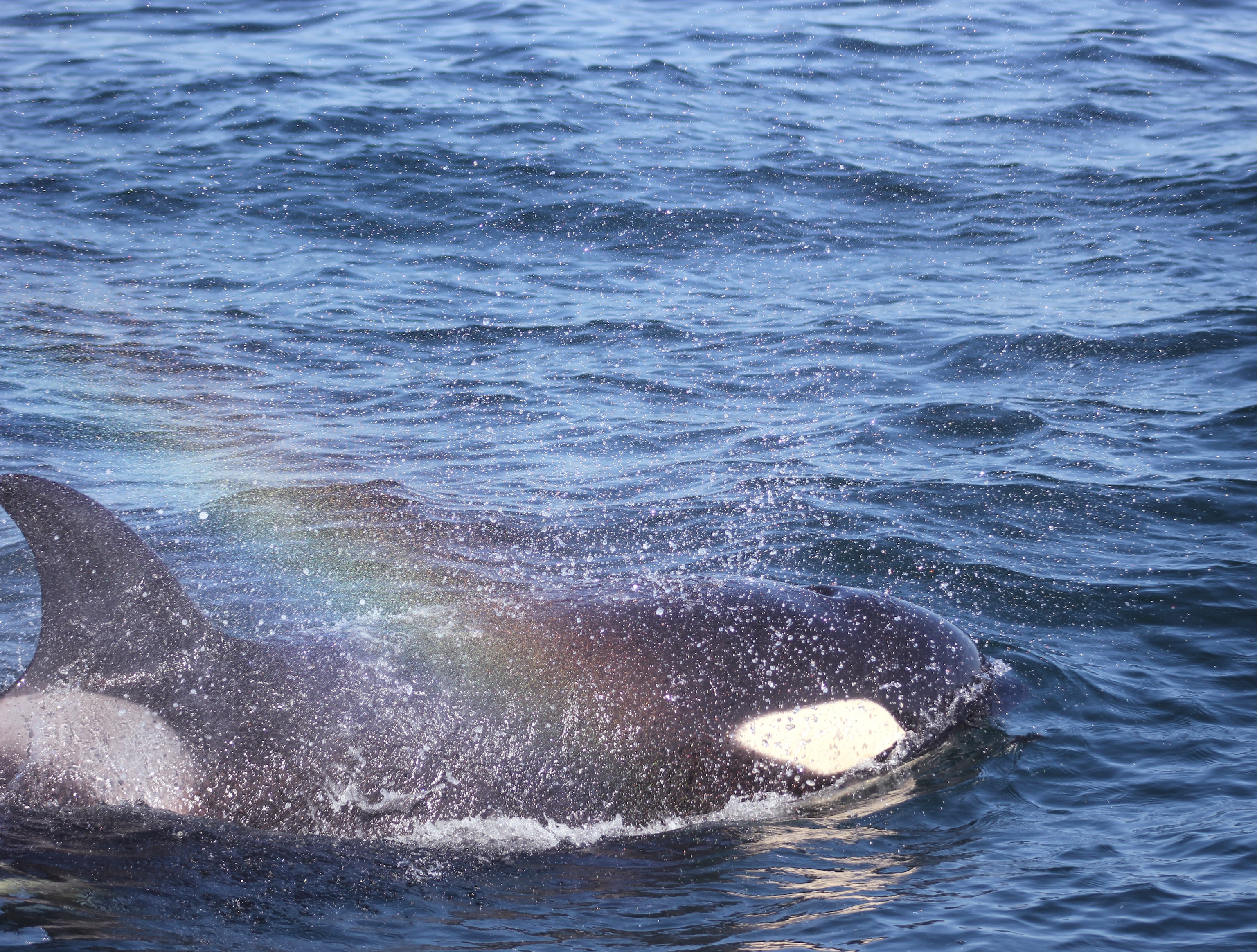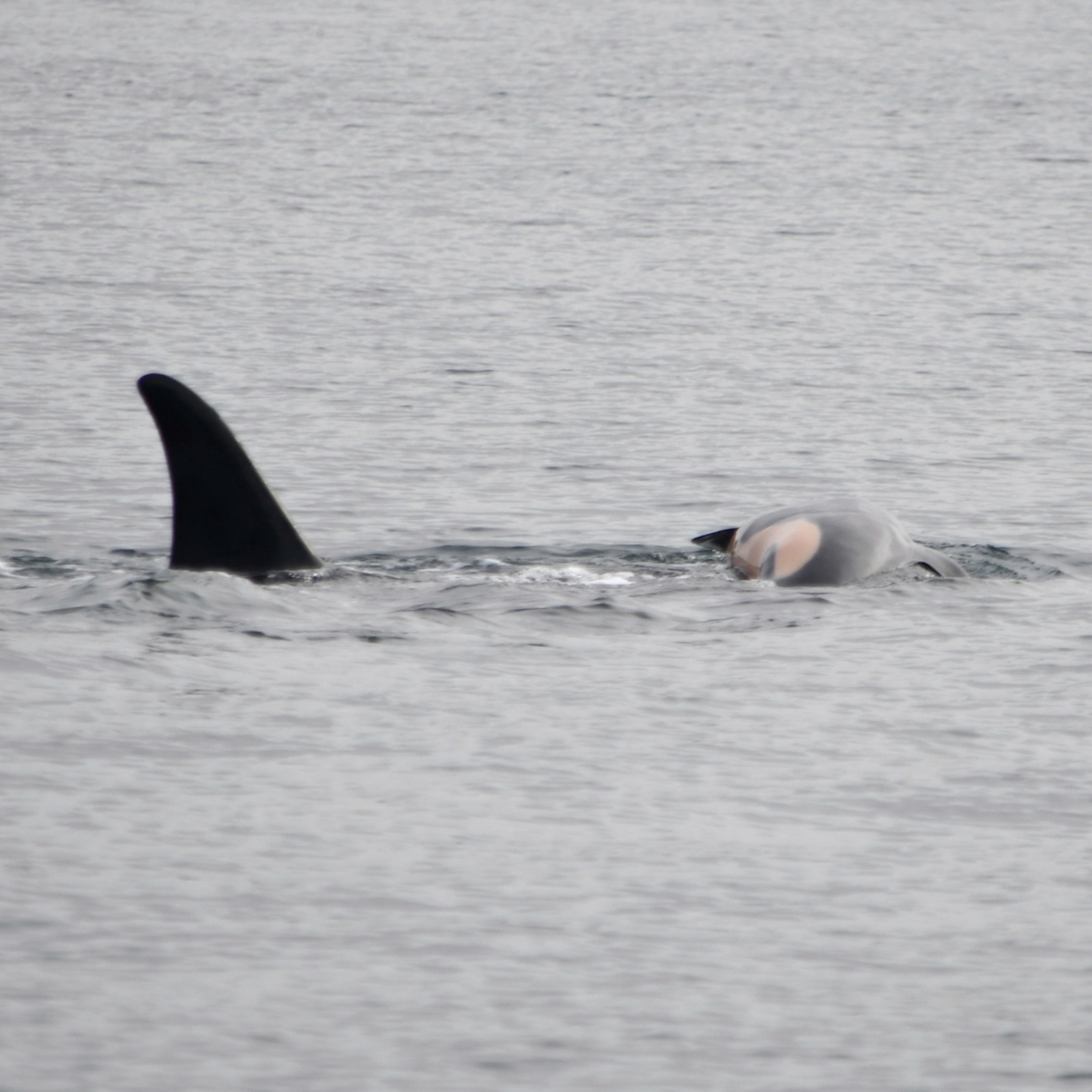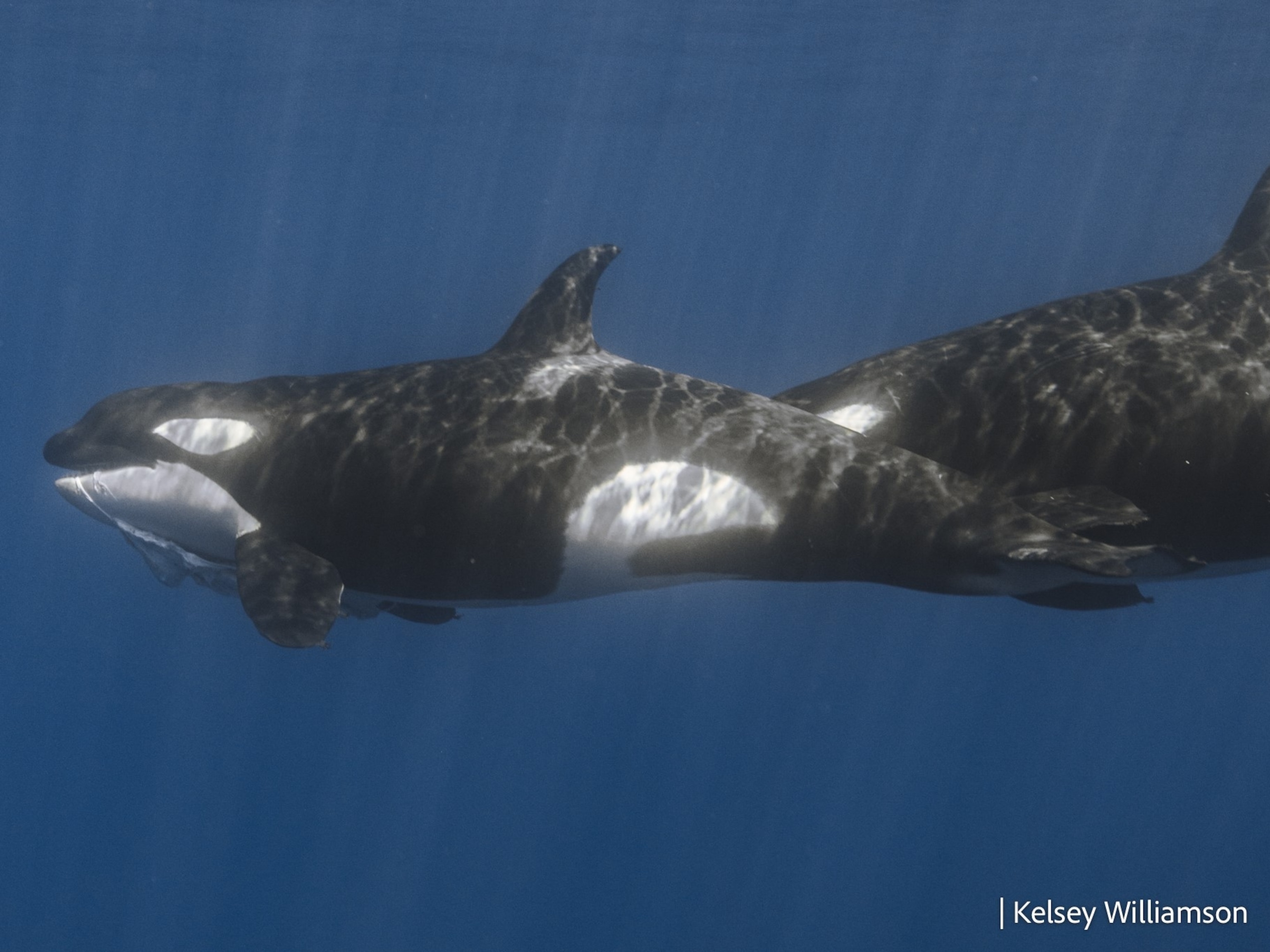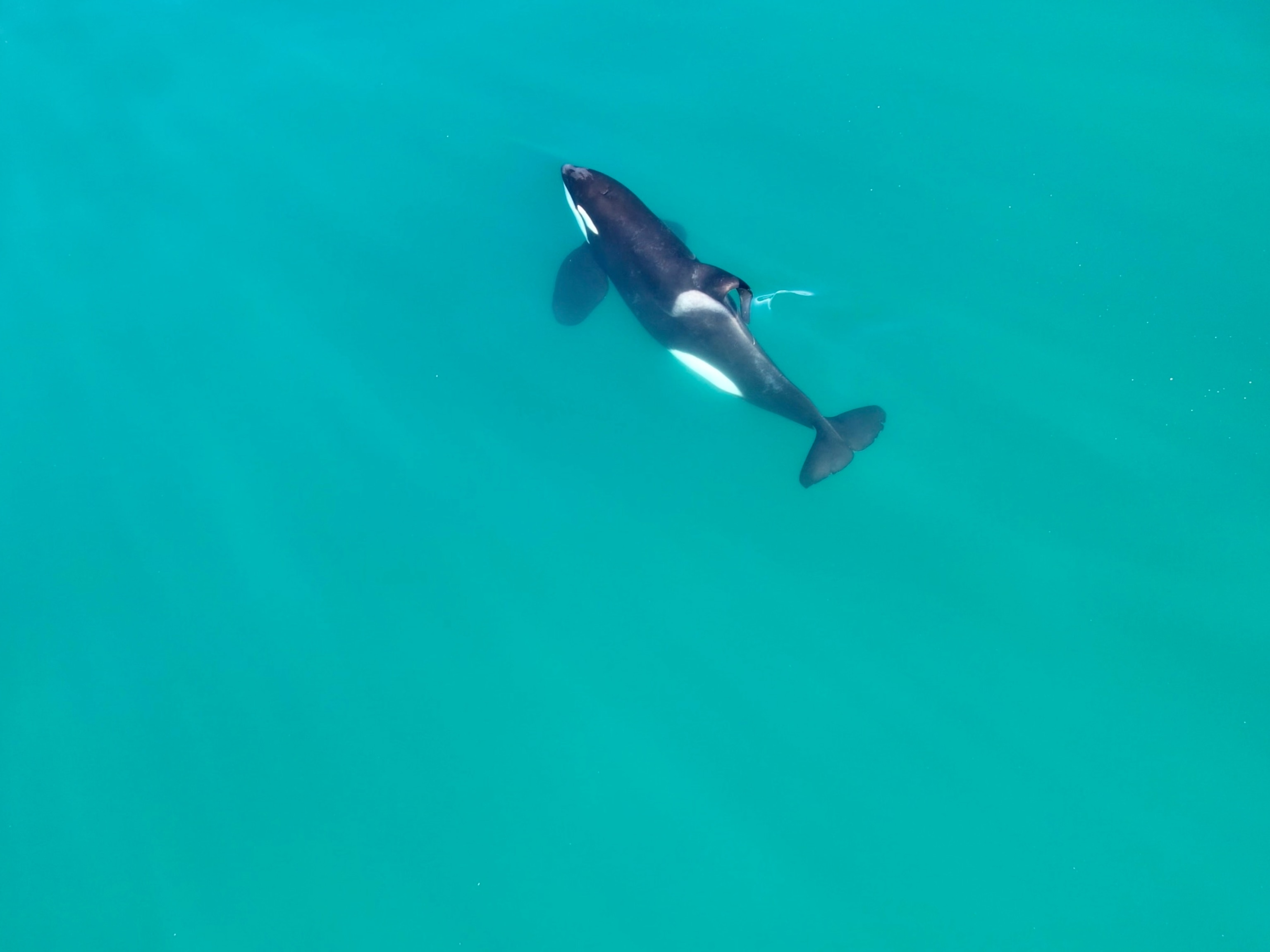Noisy boat traffic may hide fish from hungry orcas
Scientists eavesdropped on orcas and found ship sounds may hide fish from the endangered killer whales.
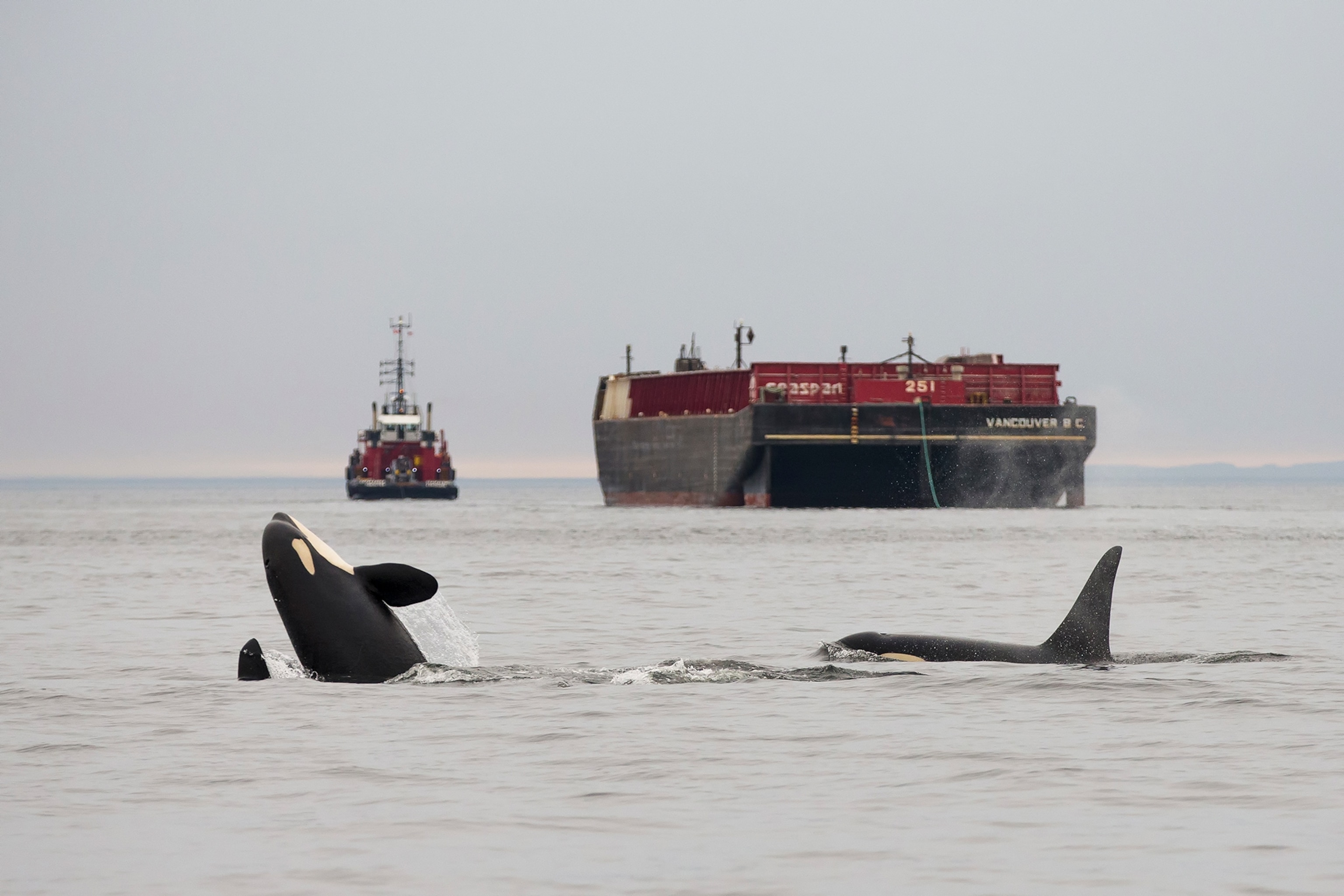
Killer whales hunt fish with clicks and buzzes—they choose and chase their prey with sound waves. But a mundane feature of modern ocean life may be akin to a salmon invisibility cloak, making the whales’ favorite meal harder to find. The culprit? Boat traffic noise.
Ocean noise has been increasing over the years, and an international research team recently reported in Global Change Biology that when the water got too noisy, whales spent more time looking for food but caught fewer fish. The study tracked every move and sound that individual orcas (Orcinus orca) made, as well as the sound reaching those whales.
This is the first time scientists have linked noise reaching a given killer whale to their simultaneous foraging success, says lead author Jennifer B. Tennessen, a conservation biologist at the University of Washington in Seattle.
Researchers found that for every decibel increase in the maximum level of background noise reaching orcas, they were four percent more likely to search for food and had a 12.5 percent lower chance of catching a fish they chased. And even though females searched for prey longer, they were 58 percent less likely to pursue fish.
“These differences between sexes—that females tend to just stop foraging,” says Sander von Benda-Beckmann, an underwater acoustics researcher at TNO, an applied scientific research organization in the Netherlands, who was not involved in the study. “That's really new and relevant and interesting, and I think also very clearly has conservation consequences.”
Catching fewer fish means eating less and if the whales eat too little, they are at higher risk of having health problems, delaying or skipping having babies, or failing to support babies they do have.
(5 ways orcas are surprising scientists)
To tail a whale
In the Pacific Ocean, killer whales fall into three groups, or ecotypes, based on differences, including their appearance and diet: residents, transients, and offshores. While residents eat fish and favor the fatty Chinook salmon, transients eat mostly marine mammals, and the offshores eat sharks and other fish. For this study, researchers gathered data from both northern and southern resident killer whales in the North Pacific between 2009 and 2014.
To track whales, researchers attached palm-sized suction cups outfitted with underwater microphones, a depth recorder, and motion sensor—basically an orca fitness tracker with ears.
Placing a tag on an orca wasn’t easy. The water had to be relatively calm, and the whales had to cooperate. From a boat, the researchers extended a telescoping pole up to 22 feet to gently tap surfacing whales and attach the tag. After a set time, the tags popped off, and the team collected them and downloaded the data.
The trackers not only recorded movements, such as the deep spiraling dive indicative of a hunt, they also captured the clicks and buzzes of searching and chasing, and the crunches and thumps of handling prey. They even picked up ambient noise, including the drone from vessel propellers.
“We were able to say, of all these deep [hunting] dives, what proportion are successful in quiet and what proportion are successful in noise. And so, we were able to show directly that noise reduces success,” says Tennessen.
Background noise comes from natural sources, such as rain or cracking polar ice, as well as human activities such as shipping goods or drilling for oil and gas. Boats emit most of the problematic noises and much of it in the same range as whale echolocation. Such mechanical racket can vary depending on a ship’s design, size, maintenance, and speed. The faster the vessel, the louder the noise caused by bubbles from propellers. The bubbles grow, bump into one another, and burst creating a low frequency din, known as propeller cavitation noise.
The effect of vessel noise on orca foraging efficiency has been studied before, but not so well quantified, says von Benda-Beckmann.
What’s sex got to do with it?
How female whales respond to noise could contribute to orca groups’ struggles.
“It’s alarming because females historically have played a really critical role in providing prey for their group,” says Tennessen. Because females share food and nurse or travel with vulnerable calves, their health is vital for the population to recover.
“We need [females] to be in good condition,” says Tennessen. “We need them to not be quitting foraging. We need them to be catching fish and sharing it and we're seeing that noise is having the opposite effect on them.”
Why females appear to be less willing to chase prey amid the din of shipping noise is unknown. But Tennessen suspects one reason could be that time away from calves needs to be “minimized but optimized.” The likelihood of catching a fish needs to outweigh the energy expense of a deep dive. When a hunt is less likely to succeed, females may favor parental tasks, such as nursing and helping calves to navigate and to avoid ship collisions.
Postponing a pursuit makes sense if they can be sure that there will be better opportunities later, says Tennessen. “Why waste energy now if I know a better chance is going to come in a half an hour?”
For southern residents—orca pods that spend summers in the Salish Sea in and around Washington state and southwest British Columbia—the females’ strategy may not work in their high-traffic habitat. “They don't get better chances. It's pretty much noisy all the time,” says Tennessen. The whales’ critical habitat falls in the midst of several international ports, including Vancouver and Seattle.
(Orcas are beloved, so why do we know so little about them?)
Conservation implications
The southern residents are listed as endangered under the U.S. Endangered Species Act, and only 73 or 74 individuals remain. The Northern residents have healthier numbers, but Canadian law still lists them as threatened. The salmon that resident killer whales mostly rely on for food face their own challenges, such as water pollution, warming freshwater habitats, and barriers to their upstream spawning habitat.
The low frequency rumble of background noise regularly exceeds 100 decibels in the region, a level that clearly has repercussions even though researchers and policymakers have yet to settle on how loud is too loud. Surprisingly, unpublished research suggests that the loudest 15 percent of vessels passing through critical southern resident habitat created at least half of the ship noise.
The noise problem is one that Tennessen views as chronic, yet possibly more straightforward to fix than ailing fish populations or pollution—ships could simply slow down to make less noise. Fortunately, with the guidance of both governmental and nongovernmental groups from Canada and the United States, some ship operators are slowing down.
The Vancouver Fraser Port Authority in Canada reported in 2023 that 87 percent of ships slowed or moved over for southern resident whales in critical habitat, which led to a decrease of 4.2 decibels compared to 2019, before slowdowns began. Washington tribes, ports, and other local authorities join in a program of voluntary slowdowns in Washington waters called Quiet Sound, which offers information on orca locations. About 70 percent of vessels follow Quiet Sound's guidelines and voluntarily slow down in killer whale critical habitat, according to Rachel Aronson, Quiet Sound program director at Washington Maritime Blue.
From October 2022 to February 2023, Quiet Sound found that the slowdowns decreased the volume of sounds in the frequency range of orca echolocation by 2.8 decibels.
Washington State law requires vessels to reduce to a maximum seven knot speed within a half nautical mile of orcas and limits the distance between a vessel and orcas. The state is increasing the minimum distance to 1,000 yards starting January 1, 2025.
Buzz about innovations in propeller technology is also positive. A propeller by Sharrow Marine, for example, is based on a design for a quieter drone propeller. If claims of a more efficient and quieter boat propeller are true, that’s good news for both reducing fuel use and quieting traffic.
Tennessen says increasing vessel noise is a problem in oceans around the world. “We're finally able to measure the impacts that it's having on wildlife,” she says, “and we're finding that the impacts are numerous.”

